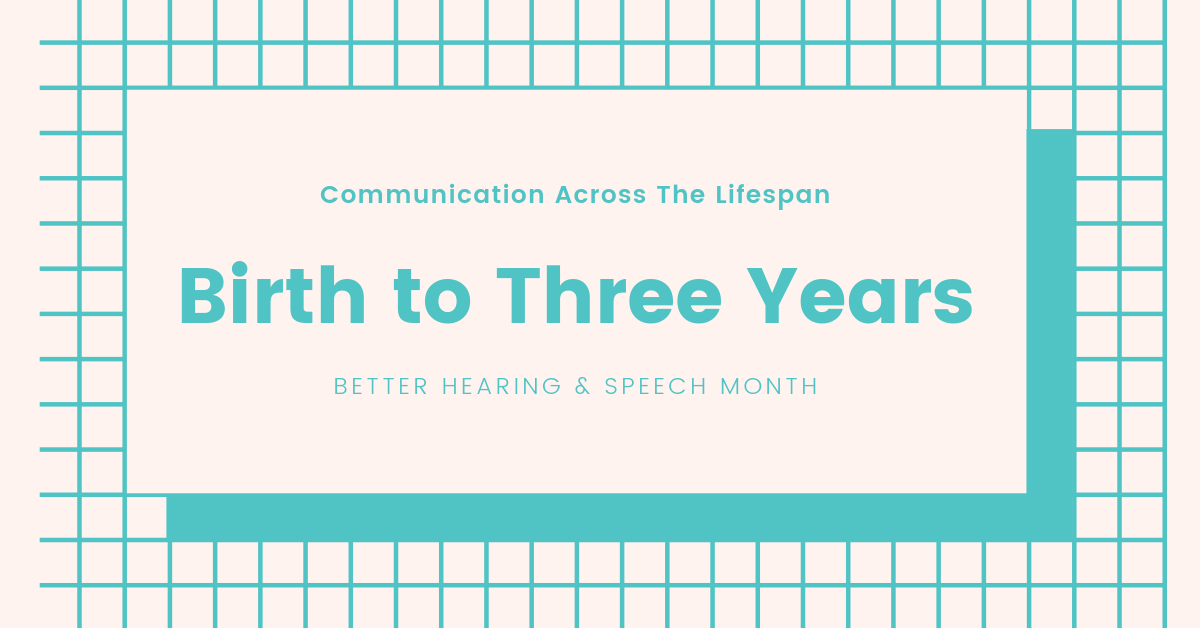
Communication Across the Lifespan: Early Intervention

To celebrate Better Hearing and Speech Month we are taking a closer look at this year’s topic, Communication Across the Lifespan. Advanced Clinicians will be addressing their experience serving four segments of the lifespan each week. In this week’s post, Jennifer Martin, MS CCC-SLP and Clinical Director at Advanced shares her experience and common questions with Early Intervention: Birth-to-Three Years.

Jennifer Martin, MS CCC-SLP
As a Speech and Language Pathologist with 17-years-of-clinical experience, I feel like one of the best decisions I made early in my career was to work with the birth-to-3 population. Specifically, working as part of a transdisciplinary NICU team has been one of my career highlights. I hear from many SLP new grads (and older grads like myself) that the younger population is often where they receive less training in graduate school, but that they desire to work with this population and want more experience. There is a vast amount of research that shows that the earlier babies and children receive therapeutic interventions, the better the long-term outcomes. How inspiring to know that our work in this area can potentially change the outcome of a child’s life for the better?

At Advanced, we value our community of therapists and we want to create a dynamic Q & A in this blog. I will begin and list 5 common questions that I get from therapists about working with the birth-to-3 population. Please list other questions you may have in the comments section and add any additional information or experiences you’d like to share.

What are some different settings that I can work with the birth-to-3 population?
I recommend first doing an internet search with “state name early intervention” as this may vary state-by-state, but often the ideal place to work with this population is in the home setting with the family present. Family education is an important part of this young group. Work with babies can occur in a NICU or a follow-up clinic for NICU graduates, but many babies are also seen in the home. Another common setting is a daycare or preschool.
What exactly does an SLP do with an infant?
Due to improved knowledge and life-saving medical interventions, the infant mortality rate consistently decreases. Often these infants require more support and therapeutic interventions to thrive, and that is an important part of our job when working with them. We look at overall body functions, such as breathing, movement, feeding, interaction, and the ability to soothe themselves. All of these give us valuable information as to how the infant is doing and where we need to provide support for continued growth and development. A large part of our work with them is helping the caregivers to understand what to expect and how they can support their baby now and into the future.

What are your favorite activities/toys when working with the birth-to-3 population?
I have many favorites depending on the age. For infants, I love quiet rattles to engage them for tracking, plastic rings that they can grab and bring to their mouths, and lightweight teething toys. If I am working on feeding, I will also have a variety of bottles, spoons, and cups in my arsenal. When working with toddlers, I love cause-and-effect toys, board books, stacking blocks (even more fun to knock them down!), and bubbles. Anything that is enticing and encourages them to communicate and pay attention. For the 2.5 – 3-year-old I love crayons, playdoh, books, balls, and basic turn-taking games.
What are other types of therapists or professionals you may be working alongside with this population?
I have been fortunate enough to work with the following when working with the birth-to-3 population; occupational therapists, physical therapists, dietitians, vision therapists, teachers of the deaf and hard-of-hearing, special education teachers, developmental therapists, and nurses.
How do you get caregivers more involved with providing therapy in the home?
I explain to the caregivers at the initial visit that they are the most important piece of the therapy puzzle with their child. My job is to discuss development with them, where their child is, and where we want to go in therapy. The caregiver is my invaluable partner on this journey because if they don’t carry over what we do, then improvement will be stalled. Creating a relationship with them in which they are empowered helps tremendously. Lastly, I give them reasonable small tasks to work on throughout the week that are built into daily activities. For example, singing the same song or playing a social game during bath time.
Additional Allied Healthcare Resources:
- AMN Passport: Our all-in-one allied app for booking allied travel jobs.
- Refer-a-Friend: Make up to $2,000 per referral.



